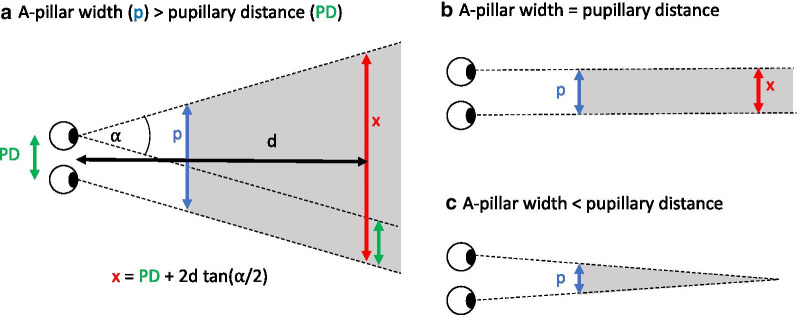Fig. 4.
Schematic illustration of the binocular blind zone (gray regions) created by A-pillars (blue arrows) of different widths. a If the A-pillar is wider than the distance between the pupillary distance PD—which is the case in most extant cars—, the width (x) of the blind zone increases with the distance (d) from the observer. b If the width of the A-pillar were equal to the pupillary distance, the width of the binocular blind zone would be equal to the pupillary distance (typically about 6 cm) at any distance. c If the width of the A-pillar were less than the pupillary distance, the width of the blind zone would decrease with distance. Panel (a) also illustrates the definition of the binocular obstruction angle α. The equation underneath shows how the width x of the binocular blind zone at a given distance d can be calculated based on the binocular obstruction angle and the interpupillary distance. In (b), the binocular obstruction angle is zero, and in (c) it is negative

